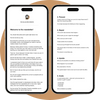A graphic designer has many potential career paths and opportunities for advancement throughout their career.
Here is an in-depth look at the typical career stages and roles a graphic designer can pursue as they gain more experience and expertise.
Entry-Level Graphic Designer
The first job for most graphic designers after finishing their education is an entry-level or junior role. In these beginning graphic design jobs, recent graduates have a chance to get hands-on experience, learn technical skills, become familiar with industry workflow, and start building their professional portfolio.
Common entry-level graphic design roles include:
- Junior designer
- Assistant designer
- Production artist
- Layout artist
In these roles, entry-level designers work under the supervision of more experienced senior designers. They are typically tasked with simple design projects such as laying out brochures, designing illustrations, retouching photos, creating logos, formatting documents, and preparing files for production. Entry-level designers utilize software like Adobe Creative Cloud while learning principles of typography, color theory, branding, and composition on the job.
The entry-level phase is an exciting chance for new designers to get their foot in the door. It prepares them to handle more complex work down the road in their career.
Mid-Level Graphic Designer
After gaining 3-5 years of experience at entry-level, graphic designers can expect to advance into mid-level roles with more responsibilities and creative challenges.
In mid-level graphic design positions, an individual will take on more independent work with less supervision. Mid-level designers may lead projects end-to-end, guide more junior designers, interface directly with clients, manage budgets and timelines, and expand their skills into website design, UI/UX, animation, marketing, and more.
Some common mid-level graphic design job titles are:
- Designer
- Graphic designer
- Production designer
- Art director
- Creative specialist
- Design lead
The mid-level phase of a graphic design career is an opportunity to build key relationships with coworkers, vendors, and clients while honing a personal design style and creative niche.
Senior Graphic Designer
After 5+ years of progressive industry experience, a graphic designer can reach the senior level. Their duties are now focused on high-level design strategy, planning, and management.
In senior graphic design roles, responsibilities include:
- Leading large or enterprise-wide design projects
- Setting design direction for brands
- Maintaining style guides and standards
- Hiring and managing teams of designers
- Making executive-level creative decisions
- Pitching marketing and design strategies
Some senior graphic design titles are:
- Senior designer
- Design manager
- Brand identity lead
At this stage, senior graphic designers take on more creative freedom and impact. Yet they must balance that with practical business results for clients.
Art/Creative Director
The ultimate goal for many graphic designers is to be the lead creative and shape design visions for brands or companies. These roles require 8-10+ years minimum of progressive design management experience.
As an art director or creative director, designers will:
- Maintain oversight of all design projects and teams
- Align creative with business objectives
- Direct brand identity and style guides
- Present work and pitch ideas to stakeholders
- Hire and mentor other designers
- Oversee budgets and timelines for all creative
These executive creative leadership roles offer major responsibility - and reward - for talented graphic designers.
Freelance Design Consultant
Some graphic designers opt to go independent and work for themselves. As freelance consultants, they take on projects from various agencies and companies.
Benefits of freelancing include:
- Flexible schedule
- Variety of work for different clients
- More creative control over projects
- Ownership of business and branding
Challenges of freelancing include inconsistent income, lack of benefits, and need to handle all business aspects alone. Freelancing is most suitable for experienced designers seeking autonomy.
The Takeaway
The career path for a graphic designer has many potential directions.
With talent and persistence, designers can pursue leadership, management, freelancing, and other opportunities.
The career stages provide growing responsibility and creative impact over time.

